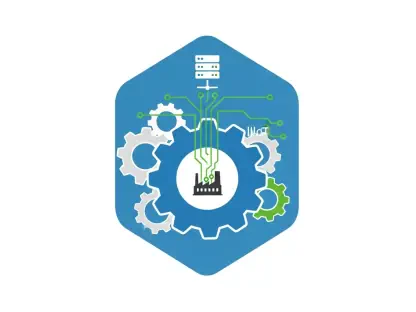In an era where the Internet of Things (IoT) seamlessly integrates devices into everyday life, the shadow of intellectual property (IP) theft looms large over manufacturers, creating a pressing need for robust safeguards. With global supply chains stretching across continents and outsourcing to contract manufacturers becoming standard practice, the vulnerability of proprietary designs, firmware, and security credentials has never been more pronounced. The financial toll is staggering, with IP theft draining hundreds of billions annually from economies in the US, UK, and EU. This critical issue demands a deep dive into the risks, regulatory shifts, and actionable strategies that can shield innovation from exploitation. As the complexity of IoT ecosystems grows, so does the urgency for manufacturers to fortify their supply chains against pervasive threats, ensuring that the technology driving progress doesn’t become a gateway for loss.
The economic consequences of IP theft are not just numbers on a page but a clarion call for immediate action in the tech sector. Annual losses in the US alone range between $225 billion and $600 billion, while the UK and EU face deficits of $11.7 billion and $65 billion, respectively. Beyond raw figures, the influx of counterfeit electronics—valued at billions in imports—undermines legitimate markets and slashes profits. For IoT manufacturers, the stakes extend beyond financial damage to include reputational harm, as stolen IP can erode consumer trust and competitive standing. Addressing this crisis is no longer optional but a fundamental requirement to sustain innovation in a cutthroat global landscape.
Unpacking the Threats to IP in IoT Manufacturing
Financial Fallout and Market Disruption
The sheer scale of economic damage from IP theft paints a grim picture for IoT manufacturers navigating global markets. With losses reaching into the hundreds of billions each year, the impact ripples through entire industries, stifling growth and innovation. In the US, the cost is estimated between $225 billion and $600 billion annually, a figure that dwarfs many national budgets and highlights the severity of the issue. The UK grapples with an $11.7 billion hit, while the EU contends with $65 billion in losses due to IP infringements. These numbers reveal a systemic problem that threatens the foundation of tech-driven economies. Beyond direct financial harm, the proliferation of counterfeit goods—often indistinguishable to consumers—floods markets, diluting brand value and diverting revenue from legitimate creators. This dual blow of theft and counterfeiting underscores why safeguarding IP must be a cornerstone of any manufacturer’s strategy.
For IoT companies, the financial repercussions are compounded by the long-term damage to market position and consumer confidence. When proprietary designs or firmware are stolen, the immediate loss of revenue is just the beginning; competitors can exploit these assets to undercut pricing or rush inferior products to market. The reputational fallout can be even more devastating, as customers may question the reliability or security of a brand linked to breaches. Moreover, the cost of legal battles to reclaim stolen IP or combat counterfeits often adds another layer of expense, draining resources that could have fueled research and development. This vicious cycle illustrates the urgent need for proactive measures to protect not just current assets but also future innovations, ensuring that companies can maintain their edge without fear of exploitation in a hyper-competitive field.
Vulnerabilities in Contract Manufacturing
Outsourcing production to contract manufacturers offers undeniable cost benefits, but it also exposes IoT firms to significant IP risks that can unravel years of innovation. Overproduction, where manufacturers exceed agreed-upon volumes without authorization, stands out as a primary concern, directly eroding profit margins and flooding markets with unauthorized units. This practice often goes undetected without stringent oversight, allowing IP to be exploited under the guise of legitimate production. High-profile incidents, such as the 2023 ASML breach where a former employee leaked semiconductor data to a competitor, reveal how insider threats can shatter trust within partnerships. Such breaches demonstrate that even well-established relationships are not immune to betrayal, emphasizing the need for robust internal controls and vigilance at every level of the supply chain.
Cyberattacks add another dimension of risk, targeting sensitive design files and production systems with alarming precision. A notable example from this year, involving Nucor Corporation, exposed how digital intrusions can compromise entire supply chains, leaving IP vulnerable to theft or manipulation. These incidents are not isolated but reflect a broader trend of sophisticated threats exploiting digital weaknesses in global manufacturing networks. The reliance on third-party manufacturers often means sharing critical data, which, without proper encryption or access controls, becomes an easy target for malicious actors. Addressing these vulnerabilities requires a multifaceted approach that goes beyond trust, integrating technical safeguards and strict operational protocols to ensure that outsourcing doesn’t equate to exposure in an increasingly hostile digital landscape.
Addressing IoT-Specific Challenges and Solutions
Securing Digital Credentials in Connected Devices
IoT devices, by their very nature, rely heavily on digital certificates to ensure secure communication across networks, but this dependency creates a unique and critical vulnerability for manufacturers. If these credentials are mishandled or accessed without authorization, entire product fleets can be compromised, effectively handing over control of valuable IP to unauthorized parties. The risk is akin to leaving a vault of proprietary information unlocked, as a single breach can cascade through connected ecosystems, exposing firmware, designs, and security protocols. This heightened exposure in IoT systems demands specialized attention, as traditional IP protection methods often fall short against digital threats. Manufacturers must prioritize strategies that secure these certificates at every touchpoint, ensuring that connectivity doesn’t become a liability.
To counter this risk, implementing strict access controls and remote management of certificates through secure servers proves essential in maintaining IP integrity. Limiting who can handle these credentials and employing encryption during transmission minimizes the chance of interception by malicious entities. Additionally, embedding traceability into the production process—such as assigning unique identifiers to each device—allows for quick detection of unauthorized units or breaches. These measures not only protect digital assets but also build a framework for accountability across the supply chain. By treating digital certificates as the linchpin of IoT security, manufacturers can close a significant gap that might otherwise jeopardize their innovations, turning a potential weakness into a fortified line of defense.
Navigating Regulatory Demands for Compliance
The evolving regulatory landscape is reshaping how IoT manufacturers approach IP protection, tying technical security to legal accountability in unprecedented ways. The EU’s Cyber Resilience Act, set to enforce strict requirements for connected devices by the end of 2027, mandates rigorous certificate management and imposes penalties that can reach up to 2.5% of global turnover for non-compliance. Similarly, updates to the UK Intellectual Property Act shift greater responsibility onto manufacturers, strengthening enforcement mechanisms. These frameworks are not mere formalities but critical benchmarks that demand integration of cybersecurity into core business practices. Failure to adapt risks not only financial penalties but also exclusion from key markets, making compliance a non-negotiable aspect of modern manufacturing.
Beyond meeting legal obligations, aligning with these regulations offers a pathway to enhance IP protection through structured, enforceable standards. Manufacturers can leverage these mandates to implement robust security protocols, such as encrypting software and embedding secure hardware, as part of their compliance efforts. Regular audits and adherence to production limits, often stipulated in regulatory guidelines, further ensure that supply chains remain transparent and accountable. This dual focus on legal and technical measures creates a synergy that fortifies IP against theft while positioning companies as trustworthy players in regulated environments. Embracing these frameworks transforms a potential burden into a strategic tool for safeguarding innovation amidst growing global scrutiny.
Building a Robust Defense Against IP Theft
Implementing Technical Safeguards
Protecting IP in IoT supply chains starts with embedding technical solutions that secure assets at the source of production. Secure hardware elements, such as security chips integrated into circuit boards, can lock firmware and prevent cloning by unauthorized parties. Encrypting software deployed from cloud systems adds another layer of defense, ensuring that even if data is intercepted, it remains unusable without proper keys. Assigning unique identifiers to printed circuit board assemblies (PCBAs) enhances traceability, making it easier to detect and address overproduction or counterfeiting. These tools collectively form a technological barrier that deters theft and misuse, preserving the integrity of proprietary designs in a landscape rife with digital threats.
Complementing these measures, limiting production batches—such as capping runs at 500 boards per order—reduces the risk of excess units entering the market without authorization. Remote certificate management via secure servers further protects sensitive credentials by ensuring they are issued only to validated devices. Real-time analytics tied to digital test logs for each serial number provide ongoing oversight, enabling manufacturers to spot anomalies or breaches swiftly. This multi-pronged technical approach not only mitigates immediate risks but also builds a foundation for long-term security, ensuring that every stage of production is fortified against potential exploitation in an interconnected manufacturing ecosystem.
Strengthening Contracts and Oversight
Beyond technical defenses, robust contractual agreements play a pivotal role in safeguarding IP within IoT supply chains. Contracts with clear clauses on IP protection, strict production limits, and explicit audit rights hold contract manufacturers accountable, minimizing the risk of overproduction or unauthorized use of proprietary assets. These legal frameworks establish a baseline of trust and enforceability, ensuring that partnerships are grounded in mutual accountability rather than blind reliance. By embedding such terms, manufacturers can deter potential misconduct and create a legal recourse if violations occur, adding a critical layer of protection to their innovation pipeline.
Operational oversight complements these contracts, with periodic audits serving as a mechanism to verify compliance and detect discrepancies in production or data handling. Leveraging real-time analytics to monitor production metrics and digital logs tied to individual product serial numbers enhances transparency across the supply chain. This proactive monitoring allows for swift identification of issues, such as unauthorized batches or security lapses, before they escalate into major breaches. Together, strong contracts and rigorous oversight form a comprehensive strategy that aligns legal and operational efforts, ensuring that IP remains secure even in the complex web of global manufacturing partnerships.
Real-World Insights and Strategic Opportunities
Lessons from Practical Implementations
Examining real-world applications provides valuable insights into how IoT manufacturers can effectively protect IP within their supply chains. Versinetic, a UK-based electronics design consultancy focused on electric vehicle charging systems, offers a compelling example of success. By integrating secure hardware elements, firmware protections, and cloud infrastructure, they ensured that only approved units were programmed during production. A custom test fixture interfaced with a secure server to validate each unit, issuing certificates individually after verification. This meticulous approach drastically reduced the risk of overproduction and aligned with stringent EU regulations, demonstrating how technical integration can secure both innovation and compliance in a high-stakes sector.
The Versinetic case also highlights the importance of tailoring solutions to specific industry needs while maintaining scalability across operations. Their use of traceability and controlled certificate issuance not only protected IP but also streamlined quality control, ensuring that every device met exacting standards before reaching the market. This balance of security and efficiency underscores a broader lesson: protecting IP doesn’t have to hinder productivity but can enhance it through smart design. Manufacturers across sectors can draw from this model, adapting similar controls to their own processes to mitigate risks without sacrificing operational agility in an increasingly competitive global landscape.
Transforming Compliance into Market Advantage
Rather than viewing regulatory compliance as a cumbersome obligation, IoT manufacturers can reframe it as a strategic opportunity to gain a foothold in tightly regulated markets. Aligning with frameworks like the EU’s Cyber Resilience Act or UK IP laws often requires strengthening IP controls, such as secure hardware and encrypted systems, which inherently bolster defenses against theft. Companies that proactively adopt these measures can access markets faster, as compliance signals reliability to regulators and partners alike. This alignment not only mitigates legal risks but also positions firms as leaders in security and innovation, distinguishing them from competitors who lag in meeting evolving standards.
Moreover, building robust licensing models alongside compliance efforts can turn IP protection into a revenue driver while safeguarding assets. By embedding security into licensing agreements and production controls, manufacturers ensure that their innovations are used only as intended, creating predictable income streams. This approach fosters trust with customers and stakeholders, enhancing brand reputation in an era where data breaches and IP theft dominate headlines. Ultimately, compliance becomes a competitive edge, enabling companies to navigate global challenges with confidence, protect their intellectual capital, and capitalize on opportunities that others might overlook due to regulatory hesitance.
Securing the Future of IoT Innovation
Reflecting on Past Efforts and Outcomes
Looking back, the journey to protect IP in IoT supply chains revealed a landscape fraught with challenges that manufacturers tackled with varying degrees of success. The staggering economic losses—billions drained annually from major markets—served as a harsh reminder of what was at stake when safeguards faltered. High-profile breaches, from insider leaks to cyberattacks, exposed the fragility of trust in contract manufacturing, while the unique risks of digital certificates in IoT devices underscored the need for specialized defenses. Regulatory shifts, though initially daunting, pushed companies to integrate security with legal accountability, reshaping how IP was protected across global operations. These past struggles highlighted the critical gaps that demanded attention and innovation.
Charting a Path Forward with Actionable Steps
Moving ahead, IoT manufacturers must commit to a proactive, integrated approach that weaves security into every facet of their supply chains. Prioritizing technical solutions like secure hardware, encryption, and traceability should be paired with airtight contracts and regular audits to ensure accountability. Embracing compliance with emerging regulations offers a dual benefit—mitigating risks while unlocking access to regulated markets. Learning from successful implementations, such as Versinetic’s model, provides a blueprint for balancing security with efficiency. The path forward lies in immediate action: reviewing existing partnerships, fortifying digital credentials, and embedding compliance into long-term strategies. By doing so, manufacturers can ensure that their innovations remain a source of growth rather than a target for exploitation.









